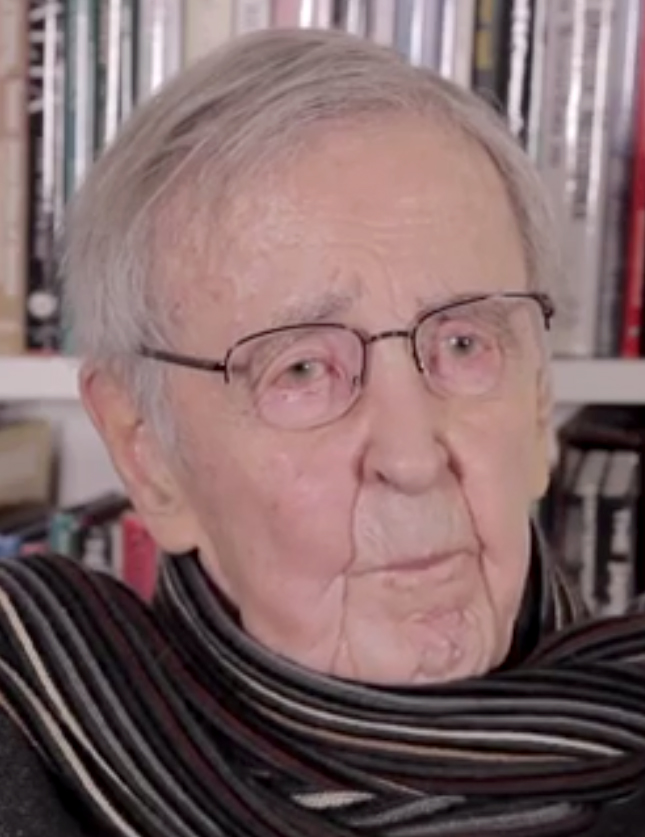The Atomic Heritage Foundation is sad to report the passing of Manhattan Project veteran William Lowe on July 4, 2016. He was 95 years old.
Lowe was studying chemical and metallurgical engineering when World War II began. Shortly after the bombing of Pearl Harbor, he volunteered for the Army. He continued his education, taking engineering classes at Purdue University and the University of Pennsylvania, and completed basic training at Fort Bragg. In an interview with AHF in 2014, Lowe recalled his introduction to the Manhattan Project as a member of the Special Engineer Detachment in March 1944: “I was given sealed orders that I was to be put on a train. I was in charge of seventeen soldiers that were all engineers. I was to take them to the place that my sealed orders would tell me to take them after we got on the train, got going, and hit a certain place on the route.” Eventually they found themselves at 109 East Palace in Santa Fe, NM, and were taken to Los Alamos.
He was assigned to work with chemist Arthur Wahl on the process for purifying the plutonium for the Gadget and the bombs. Wahl handled the chemistry, while Lowe managed the equipment team. Lowe explained, “When we started, we had nothing but micrograms of plutonium to work out chemical methods to purify it. Wahl’s assignment was to purify plutonium chemically so that there were no impurities, which if they were hit by an alpha particle could release neutrons and cause the weapon to pre-detonate.”
After the war, Lowe was selected as the Chief of the Nuclear Engineering Section of the Hanford office of the Atomic Energy Commission. He oversaw the building of new reactors, laboratories, and other support facilities at Hanford. He worked in the nuclear power industry for many years and was in the control room during the Three Mile Island incident, where he helped to ascertain the severity of the problem and find ways to stabilize the reactor.
Looking back on his life, Lowe recalled, “I would say that my 93 years have been dominated by atomic bombs, war—in particular, World War II—and later by peaceful uses of atomic energy.”





